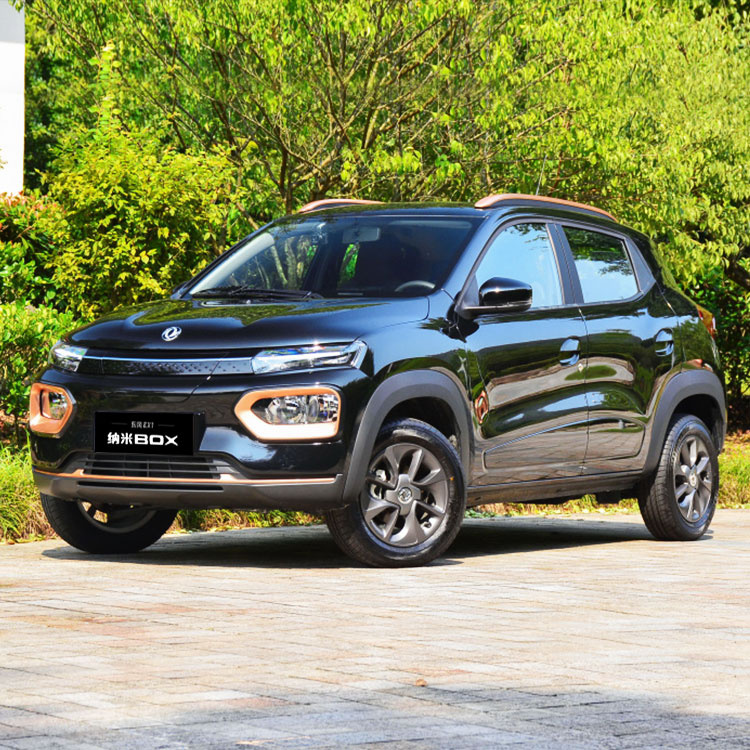The Future Of Mobility: The Role Of Chinese Auto Manufacturers

Table of Contents
Technological Innovation in Chinese Auto Manufacturing
Chinese auto manufacturers are spearheading technological advancements that are reshaping the automotive industry. Their commitment to innovation is evident in two key areas: electric vehicles (EVs) and autonomous driving capabilities.
Electric Vehicle (EV) Dominance
China's dominance in the EV market is undeniable. This is fueled by several factors:
- Rapid advancements in battery technology and electric motor design: Chinese companies are investing heavily in research and development, leading to significant improvements in battery life, charging times, and overall EV performance. This includes breakthroughs in solid-state battery technology, promising even greater energy density and safety.
- Competitive pricing strategies driving EV adoption: Chinese automakers offer EVs at significantly more competitive price points compared to their Western counterparts, making them accessible to a wider range of consumers. This affordability is a crucial factor in driving mass adoption.
- Government support and incentives fueling the growth of the EV sector in China: The Chinese government provides substantial subsidies and tax breaks for EV purchases, creating a favorable market environment for both manufacturers and consumers. Extensive charging infrastructure development further supports this push.
- Examples of successful Chinese EV manufacturers (e.g., BYD, NIO, Xpeng): Companies like BYD, with its Blade Battery technology, and NIO, known for its battery swapping infrastructure, are leading the charge, showcasing the innovative capacity of Chinese EV manufacturers. Xpeng's advanced driver-assistance systems further demonstrate the technological prowess.
- Focus on innovative battery swapping technology: NIO's pioneering battery swapping stations offer a faster alternative to traditional charging, addressing a major concern for EV owners – range anxiety. This innovative approach could revolutionize EV infrastructure globally.
Autonomous Driving Capabilities
Beyond EVs, Chinese auto manufacturers are making significant strides in autonomous driving technology:
- Significant investment in autonomous driving research and development: Massive investments are being poured into AI, sensor technology, and software development to enable fully autonomous vehicles.
- Collaboration with tech giants on AI and software development: Partnerships with leading tech companies like Baidu and Tencent are accelerating the development of sophisticated AI algorithms crucial for autonomous navigation.
- Progress in deploying autonomous features in commercially available vehicles: Several Chinese automakers are already incorporating advanced driver-assistance systems (ADAS) and Level 2 autonomous driving features in their vehicles.
- Challenges in navigating complex regulatory landscapes for autonomous vehicles: The regulatory landscape surrounding autonomous vehicles remains complex and varies across countries, presenting challenges to global expansion.
- Potential for leadership in autonomous driving technology: With continued investment and innovation, Chinese automakers have the potential to become global leaders in autonomous driving technology.
Global Expansion Strategies of Chinese Automakers
Chinese auto manufacturers are aggressively pursuing global expansion, employing various strategies:
Market Penetration in Developed Countries
- Aggressive export strategies targeting European and North American markets: Chinese brands are actively entering established markets, challenging the dominance of traditional automakers.
- Adapting vehicles to meet the specific needs and regulations of different regions: This includes adjusting designs, features, and safety specifications to comply with local standards and consumer preferences.
- Building brand recognition and trust among international consumers: Significant marketing campaigns and product demonstrations are crucial for gaining consumer acceptance in new markets.
- Leveraging competitive pricing and technological features: Competitive pricing and cutting-edge features are key selling points in attracting international buyers.
- Challenges associated with overcoming established brand loyalty: Breaking into markets with deeply entrenched legacy brands presents a significant challenge.
Strategic Partnerships and Acquisitions
- Collaborations with international automakers and technology companies: Joint ventures and partnerships provide access to technology, expertise, and distribution networks.
- Acquisitions of foreign brands and technologies to expand global reach: Acquisitions can quickly accelerate market penetration and technological advancement.
- Building supply chains and manufacturing facilities in key markets: Establishing local manufacturing helps to reduce costs and improve response times.
- Utilizing joint ventures to access local expertise and markets: Joint ventures can leverage the strengths of both partners, mitigating risks and enhancing market penetration.
- The long-term implications of such strategic alliances: These alliances can reshape the global automotive landscape and lead to significant consolidation within the industry.
Challenges and Opportunities for Chinese Auto Manufacturers
While the prospects are promising, Chinese auto manufacturers face significant challenges:
Navigating Global Trade Tensions
- Impact of trade wars and tariffs on global expansion plans: Geopolitical instability and trade disputes can significantly impact export strategies and profitability.
- Strategies for mitigating risks associated with geopolitical instability: Diversification of markets and supply chains is crucial to reduce dependency on any single region.
- Building resilience to global economic fluctuations: Adapting to changing market conditions and economic downturns is critical for long-term sustainability.
- Diversification of supply chains to reduce dependency: Reducing reliance on specific suppliers and regions is crucial for mitigating supply chain disruptions.
- The role of international diplomacy in shaping the future: International relations and trade agreements play a critical role in shaping the opportunities and challenges faced by Chinese automakers.
Meeting Stringent Safety and Environmental Standards
- Addressing concerns regarding vehicle safety and emissions standards: Meeting rigorous safety and environmental regulations in developed markets is paramount.
- Investing in research and development to meet global regulatory requirements: Significant investment is needed to ensure compliance with evolving standards.
- Ensuring compliance with evolving environmental regulations: Meeting increasingly stringent emission standards requires ongoing innovation and technological advancements.
- Building trust and credibility in international markets: Demonstrating a commitment to safety and environmental responsibility is crucial for building consumer confidence.
- The importance of transparency and accountability: Maintaining transparency and accountability in all aspects of operations is essential for building trust.
The Future of Chinese Auto Manufacturers in the Global Market
The future looks bright for Chinese auto manufacturers. We can expect:
- Predictions for market share growth: Continued growth in market share is anticipated, particularly in the EV and autonomous vehicle segments.
- Potential for leadership in specific segments (e.g., EVs, autonomous vehicles): Chinese companies have the potential to become global leaders in these key areas.
- Impact on global competition and innovation: Increased competition will drive innovation and accelerate the pace of technological advancements.
- The role of government policies and regulations: Government policies and regulations will continue to play a significant role in shaping the industry's trajectory.
- Long-term sustainability and environmental impact: A focus on sustainability and environmental responsibility will be crucial for long-term success.
Conclusion
Chinese auto manufacturers are rapidly transforming the global automotive landscape. Their focus on technological innovation, particularly in the electric vehicle and autonomous driving sectors, coupled with ambitious global expansion strategies, positions them as major players in the future of mobility. While challenges remain, including navigating global trade tensions and meeting stringent international standards, the potential for continued growth and leadership is undeniable. Understanding the role of these Chinese auto manufacturers is critical for anyone involved in the automotive industry, from investors and policymakers to consumers and industry professionals. Learn more about the exciting developments in the world of Chinese car manufacturing and how it will shape your future transportation.

Featured Posts
-
 The American Battleground Taking On The Worlds Richest
Apr 26, 2025
The American Battleground Taking On The Worlds Richest
Apr 26, 2025 -
 Colgate Cl Stock Tariff Impact And Financial Performance Analysis
Apr 26, 2025
Colgate Cl Stock Tariff Impact And Financial Performance Analysis
Apr 26, 2025 -
 Hollywood Shut Down Actors And Writers On Strike What It Means For The Industry
Apr 26, 2025
Hollywood Shut Down Actors And Writers On Strike What It Means For The Industry
Apr 26, 2025 -
 The Future Of Mobility The Role Of Chinese Auto Manufacturers
Apr 26, 2025
The Future Of Mobility The Role Of Chinese Auto Manufacturers
Apr 26, 2025 -
 Harvards Future A Conservative Professors Perspective
Apr 26, 2025
Harvards Future A Conservative Professors Perspective
Apr 26, 2025
